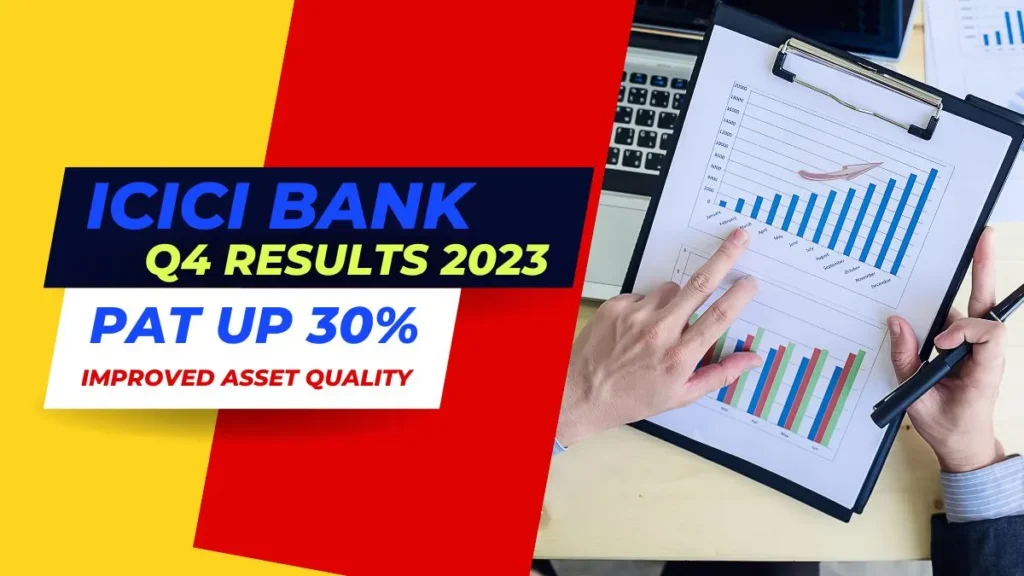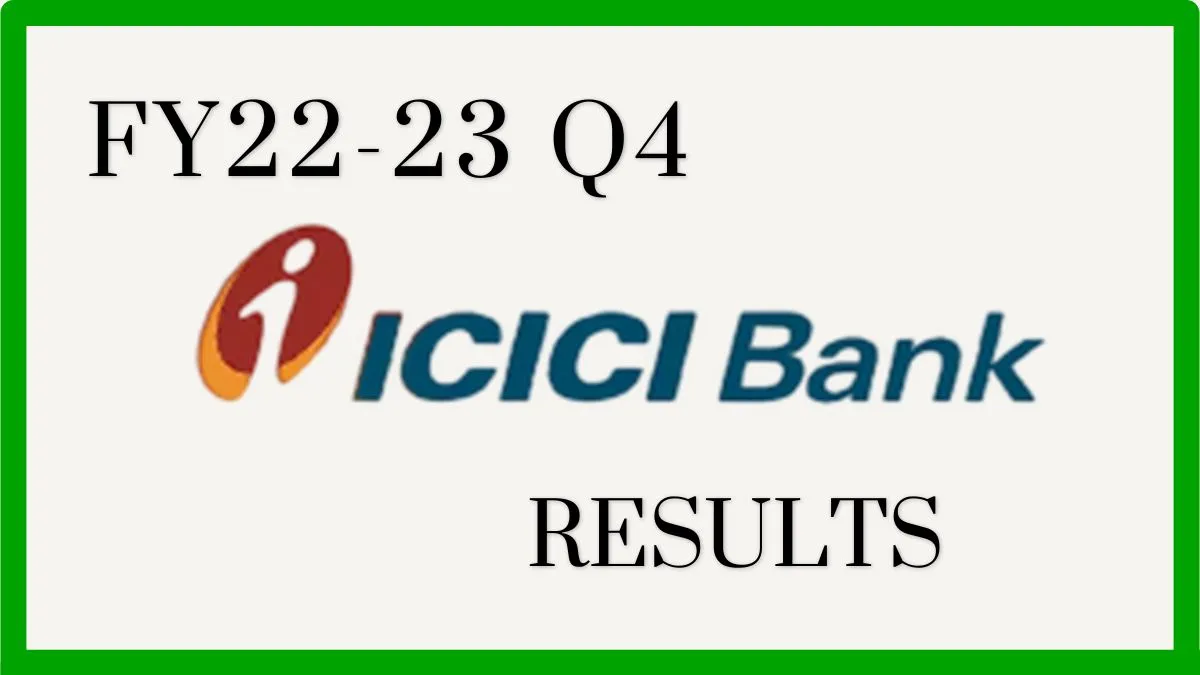ICICI BANK Q4 Results 2023: ICICI Bank, one of India’s largest private sector banks, has reported a strong financial performance in the quarter that ended March 31, 2023 (Q4 FY22-23) and for the full financial year that ended March 31, 2023 (FY22-23). Let’s take a closer look at the key highlights of the bank’s performance.
Significant Growth in Core Operating Profit
ICICI Bank reported a growth of 36.4% YoY in core operating profit (profit before provisions and tax, excluding treasury income) to ₹13,866 crore (US$1.7 billion) in Q4 FY22-23. The bank’s core operating profit with fewer provisions also grew by 34.7% YoY to ₹12,247 crore (US$1.5 billion) in the same period. This growth was driven by a significant increase in the bank’s domestic loan portfolio and a healthy net interest income (NII) growth of 19.6% YoY.
Robust Profit After Tax (PAT) Growth
ICICI Bank’s profit after tax (PAT) grew by 30% YoY to ₹9,122 crore (US$1.1 billion) in Q4 FY22-23. This growth was primarily due to strong growth in the bank’s core operating profit. It is partially offset by an increase in provisioning for bad loans. For the full financial year FY22-23, the bank’s PAT grew by 36.7% YoY to ₹31,896 crore (US$3.9 billion).
Strong Growth in Domestic Loan Portfolio
ICICI Bank’s domestic loan portfolio grew by 20.5% YoY, driven by a healthy demand for retail loans such as home loans, auto loans, and personal loans. The bank’s average CASA ratio was 43.6% in Q4 FY22-23. It indicates strong growth in low-cost deposits.

Improvement in Asset Quality
In Q4-2023, ICICI Bank’s non-performing assets (NPA) saw a positive improvement. The gross NPA ratio decreased to 2.81% from 3.07% in the previous quarter. The net NPA ratio declined to 0.48% from 0.55%. This indicates that the bank has been recovering bad loans. The bank also makes adequate provisions to cover potential losses.
Compared to the previous year, the net NPA decreased by 25.9%. The bank also wrote off gross NPAs of ₹ 1,158 crore in Q4-2023. However, the gross NPA additions were still significant at ₹ 4,297 crore. But, still, it is lower than the previous quarter.
Excluding NPAs, the total fund-based outstanding to all borrowers under resolution decreased to ₹ 4,508 crore at March 31, 2023. It was ₹ 4,987 crore in the previous quarter. The bank holds provisions of ₹ 1,380 crore against these borrowers under resolution, as of March 31, 2023. There are also contingency provisions of ₹ 13,100 crore.
Overall, ICICI Bank’s NPA performance in Q4-2023 has shown improvement. But there is still scope for further improvement. The bank’s efforts toward bad loan recovery and making adequate provisions to cover potential losses are positive signs for the bank’s asset quality in the future.
Strong Capital Adequacy Ratio (CAR)
ICICI Bank’s total capital adequacy ratio (CAR) was 18.34% and its Tier-1 capital adequacy ratio was 17.60% on a standalone basis at the end of March 2023, indicating a strong capital position.
Dividend on Equity Shares
ICICI Bank’s Board has proposed a dividend payout of ₹ 8 per share (equivalent to US$ 0.10 per ADS), conforming to the relevant guidelines. The approval for the declaration of the dividend is still pending, and the dates for record and book closure will be communicated later.
ICICIBANK Share Price
NSE: ICICIBANK: Investors have shown a strong preference for ICICI Bank. It’s a prominent private-sector bank in India. Its strong fundamentals, stable financial performance, and innovative banking solutions make it a reliable investment option.
ICICI Bank’s share price has experienced fluctuations in the past year, with a 52-week high of ₹ 958.20 and a 52-week low of ₹ 669.95. As of now, the stock of ICICIBANK is being traded at a price of ₹887.60 on the National Stock Exchange (NSE). As of the end of Q1 2023, the bank’s total market capitalization was ₹ 6,19,85,183.47 lakhs, and the free float market capitalization was ₹ 6,18,34,725.57 lakhs.
Conclusion
ICICI Bank’s strong financial results for Q4 FY22-23 and the full financial year FY22-23 reflect the bank’s ability to withstand challenging market conditions, thanks to its strong business model. The bank’s focus on expanding its retail loan portfolio, improving asset quality, and maintaining a strong capital position has positioned it well for future growth.
Source: Comapany website




